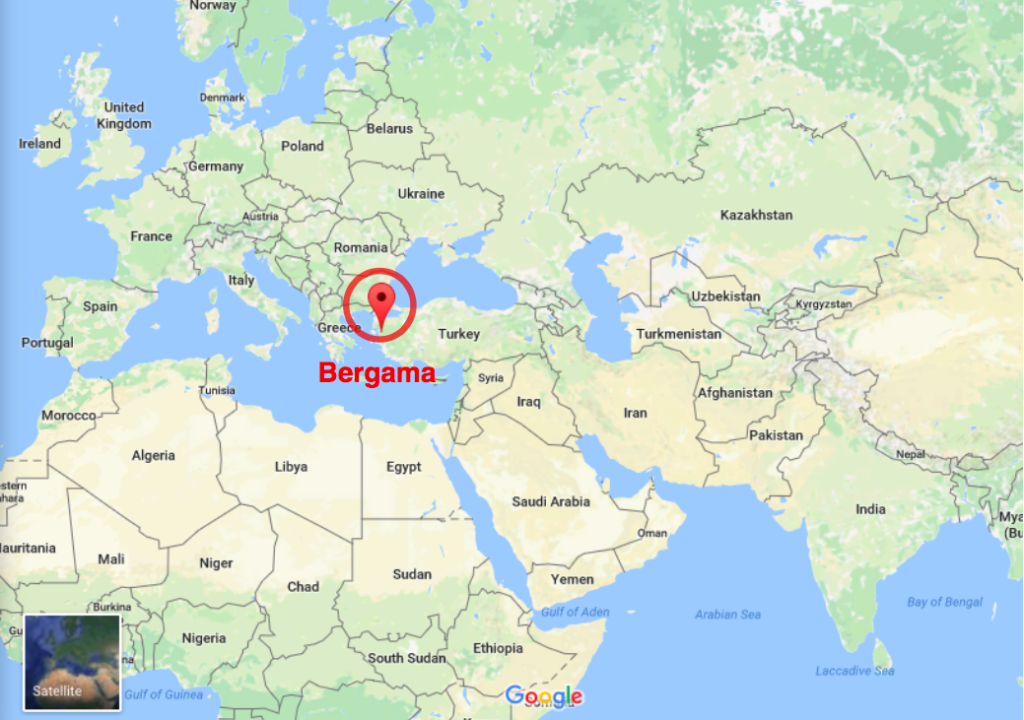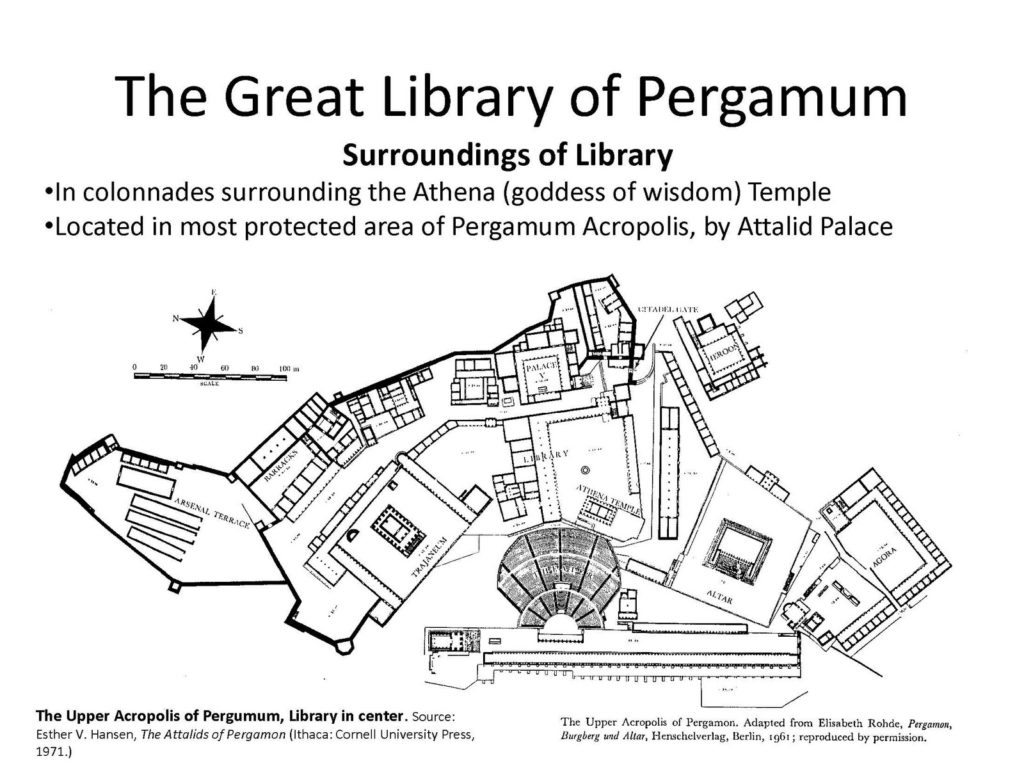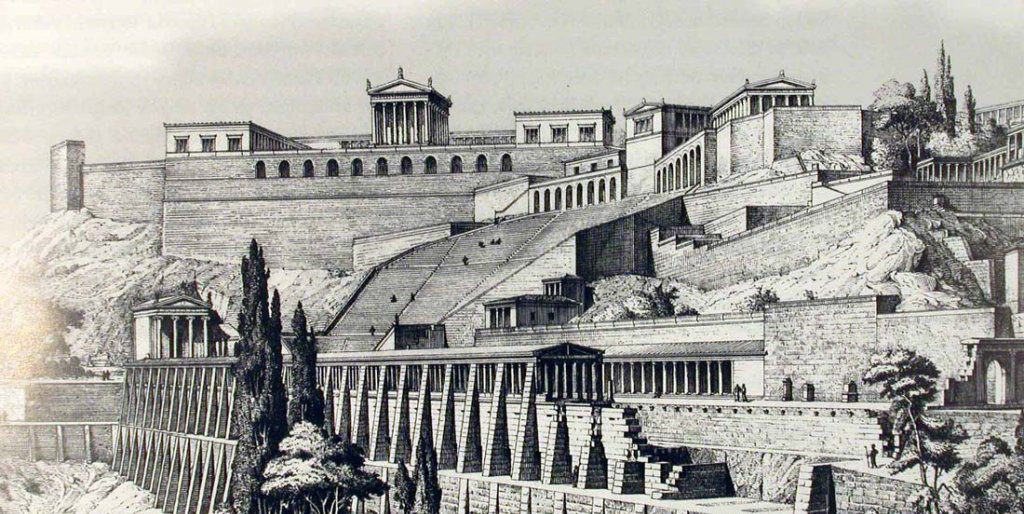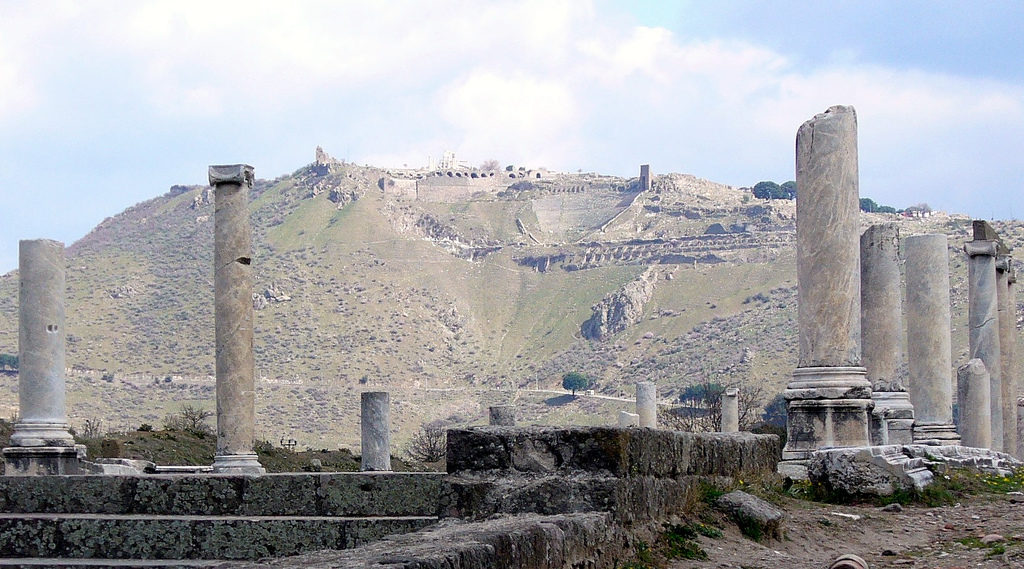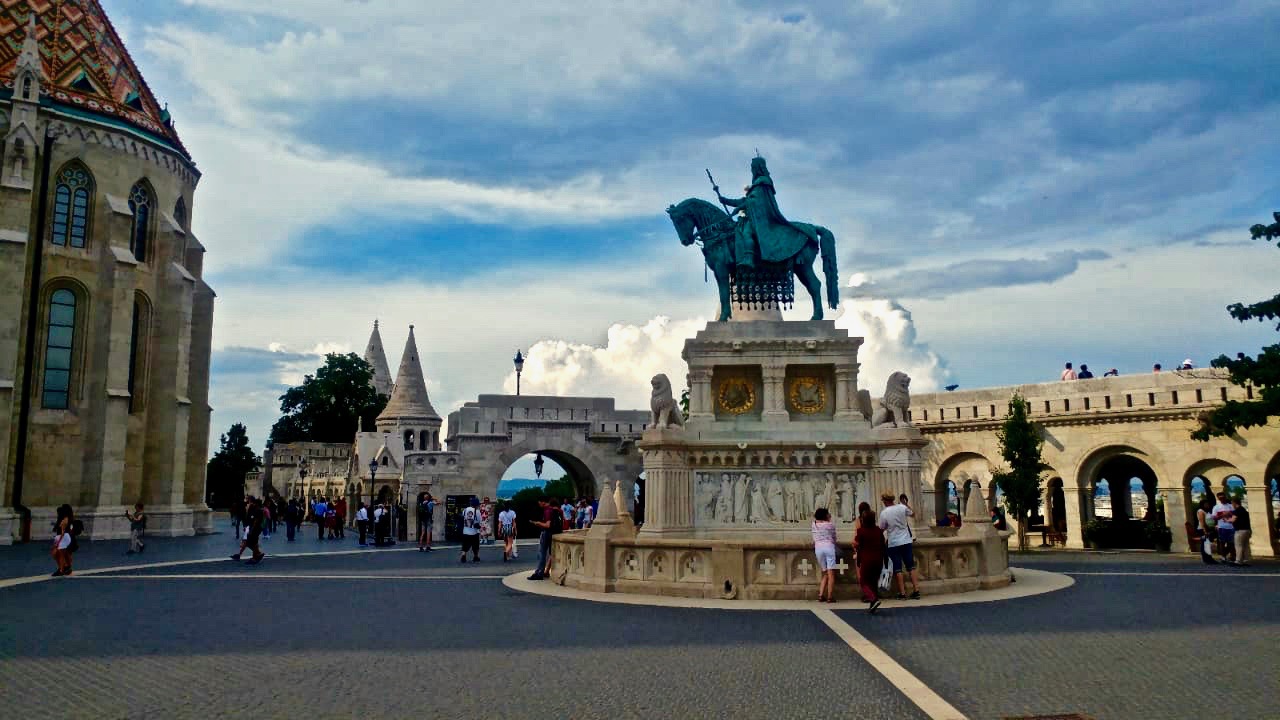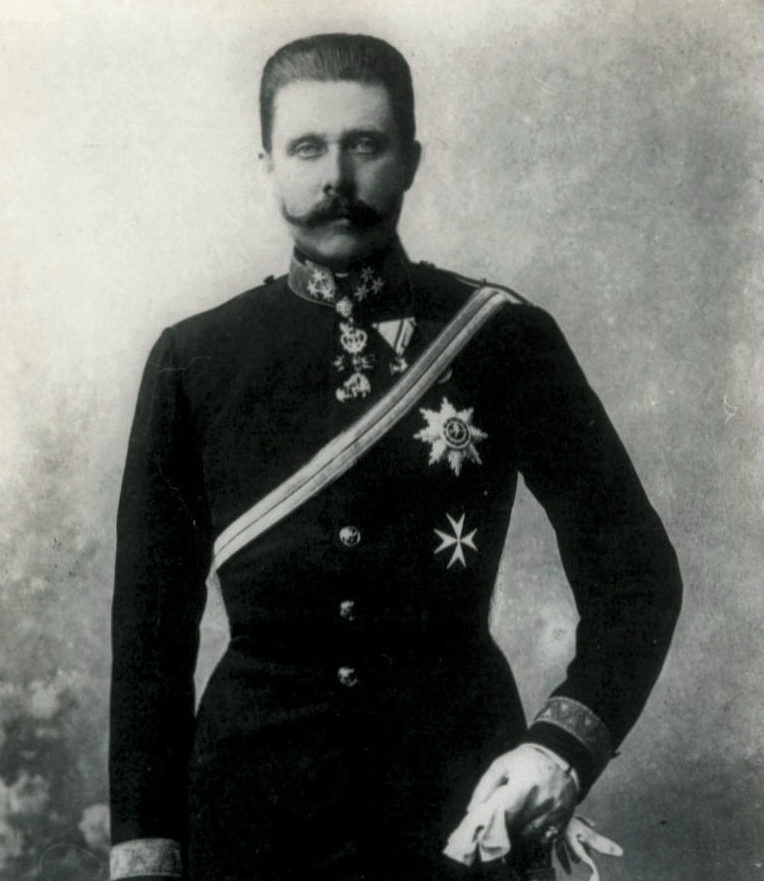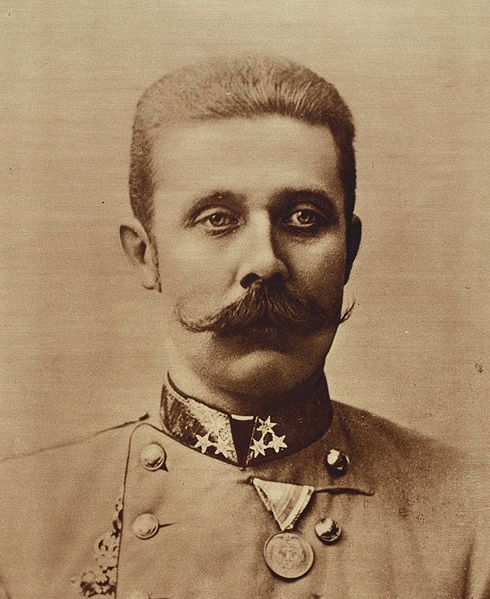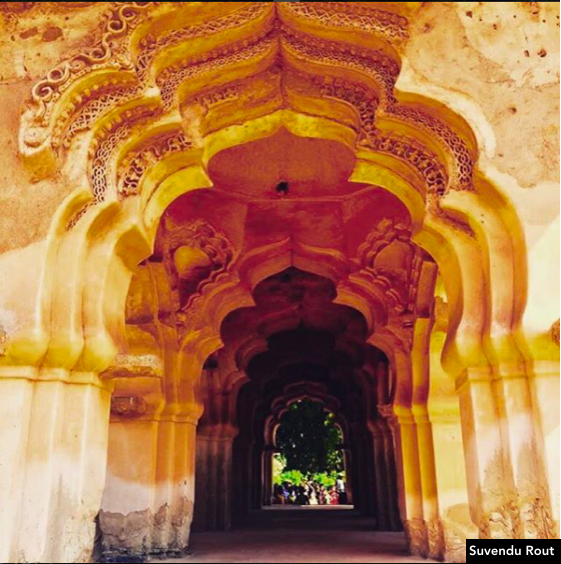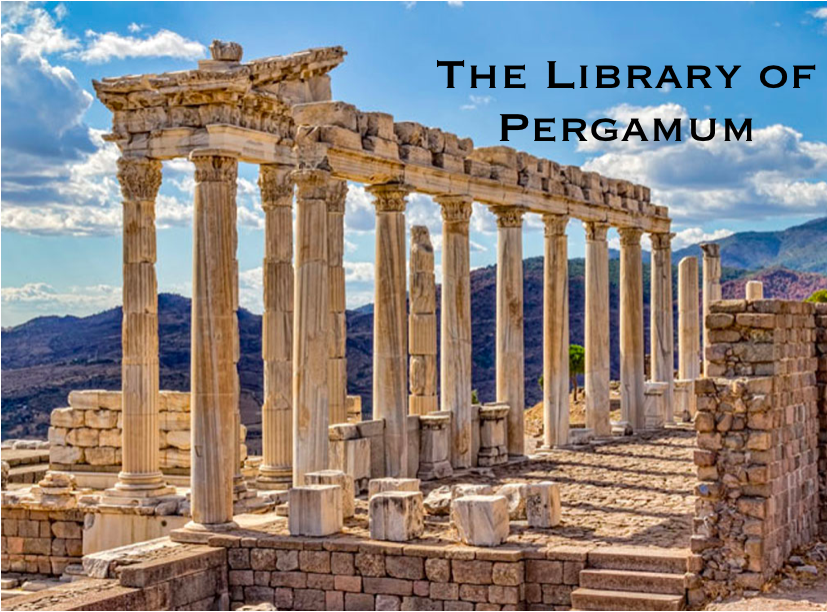
Library of Pergamum
The Forgotten Library of Pergamum
The Library of Pergamum was the second largest library after the Library of Alexandria. Laura Rodríguez explains why it is missing from our history textbooks today and her opinion about how these old libraries revolutionised our world
Pergamum, now the modern Turkish city of Bergama, was one of the most important cities of Hellenistic Greece. Hellenistic Greece is the time period after the death of Alexander the Great till Greece’s downfall against the Roman empire. There was a culturally rich, extensive library founded by King Eunemes II in the city of Pergamum. This city had gained popularity as an administrative centre. The library of Pergamum was located on the northern end of this fortified city.
Plutarch, a Greek biographer and essayist, wrote that the library had a total of 200,000 volumes. There is no catalogue to ascertain the number of books that survives from that period. But it it is believed that Plutarch’s account is indeed true. Due to its 200,000 books, this library was the second most important after Alexandria and rivalled the latter, as Pliny the Elder, Roman author and natural philosopher, pointed out in his “Natural History”. It had a grammar school, but unlike Alexandria, where they specialised in the literary and critical texts, in Pergamun they leaned towards philosophy, especially the stoic Philosophy.
There was such a rivalry between both these libraries, tradition tells us that the Ptolemaic Dynasty of Egypt stopped the shipment of papyrus to Pergamum in the hope of putting the growth of the library to an end. But it didn’t help; the city turned parchment into substitute for papyrus and also became the centre for the production of parchment. Parchment is derived form the Pergamum which comes from Latin word pergamenum and the French word parchemin.
Lionel Casson, a classicist in his book “Libraries in the Ancient World” describes the library as a “U” shaped columned building attached to the Temple of Athena, the goddess of wisdom. There were supposed to have been 4 rooms here. The Pergamums had thought long term and placed the bookshelves 50cm away from the outer wall. This helped circulation of air and could preserve books for a longer time especially in the humidity of Pergamum. At that time, books used to be manuscripts rolled up and put on a shelf.
Sometime later, an unfortunate incident unfolded that could almost leave the entire library of Pergamum abandoned and away from our history books.
As Plutarch narrates in his work “Parallel Lives”, after the burning of the Library of Alexandria, and as a reward for the losses, Mark Antony sent all the volumes of the books in Pergamum to the Serapeus of Alexandria. Thus began the decline of Pergamum which had been plundered before by the wars with Asia Minor or Anatolia.
This was the end of the second great library of Antiquity.
A distinguished citizen of Pergamum, Flavia Melitene, provided the library with many of the literary works. In fact, she donated a statue of the Emperor Hadrian as a gift.
Pergamum was declared a World Heritage Site by Unesco in 2014.
In my opinion, it’s really fascinating how much knowledge accumulated in those libraries, all the advances that were made in the field of thought, reasoning and science. It’s incredible because that happened thousands of years ago. We have always been told that the Age of Enlightenment, the Age of Reason, the Century of Lights par excellence was the eighteenth century. But it isn’t entirely true. In antiquity, there was an equal or greater amount of advances than in the Century of Lights, in the field of reason and knowledge. This knowledge had been lost in the West and was made known by the fact that the Persians translated the texts, studied and examined them a hundred times; even they made their own advances and progress in all fields of science, especially medicine and the astronomy following the Greek models. When the Arabs conquered Persia, this knowledge spread through all their dominions, arrived in Spain, in Al-Andalus and in Toledo they were translated into Latin, through Muslim knowledge the Greek texts were disseminated throughout Europe and made known. The glow of Antiquity shone again.
Many people always speak of the Middle Ages as a Dark Age, drowned in shadows, disasters, wars and plagues, but for me it was the age of the rebirth of Antiquity, the rebirth of reason and sciences, the era of universities, research and great achievements in the field of art with the construction of cathedrals. People don’t know and ignore that the Age of Enlightenment hadn’t been the century of Enlightenment if such an admirable advance hadn’t happened in the Middle Ages and in the Antiquity. And to think that all this was due to the classic knowledge that created and kept in the ancient libraries is something really incredible. I think that Antiquity isn’t as distant as it seems, and that the Middle Ages aren’t nearly as obscure as the society believes.
——————————–
This month we are celebrating books. Explore other related articles-
How the Printing Press Was Invented- http://giglee.in/movable-printing-press/
What is this thing called as the Reading Mania- http://giglee.in/reading-mania/
——————————–
This is a special guest blog written by Laura Lankmann Rodríguez Dias. Laura runs an Instagram Page about art and history. Her posts are very interesting. She also writes about historical sites. Give her a follow here.





